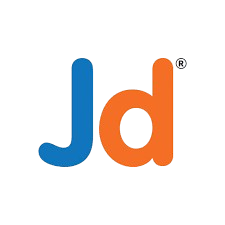
0
+
Google Reviews

0
+
Unlock the power of Azure SQL and Database Administration (DBA) with our specialized training in Kochi. Acquire comprehensive skills in deploying, managing, and optimizing Azure SQL databases. Learn from industry experts about migration strategies, security protocols, and performance tuning techniques tailored for Azure environments. Dive deep into concepts such as scalability, disaster recovery, and automation to maximize efficiency. Benefit from hands-on labs, real-world scenarios, and personalized mentorship. Elevate your career with expertise in Azure’s cutting-edge cloud database solutions.


Choosing to learn Terraform can be highly beneficial for several reasons:
1. Infrastructure as Code (IaC): Terraform allows you to define and manage your infrastructure as code. This approach provides numerous benefits, including version control, repeatability, and consistency in infrastructure deployments. With Terraform, you can codify your infrastructure, making it easier to manage, maintain, and scale.
2. Multi-Cloud Support: Terraform supports multiple cloud providers, including AWS, Azure, Google Cloud Platform (GCP), and others. This means you can use the same tooling and processes to manage infrastructure across different cloud environments, enabling hybrid and multi-cloud deployments.
3. Automation and Orchestration: Terraform automates the provisioning and management of infrastructure resources, allowing you to define complex infrastructure setups with ease. By using Terraform, you can automate repetitive tasks, reduce manual errors, and increase efficiency in infrastructure management.
4. Scalability and Flexibility: Terraform is highly scalable and flexible, making it suitable for managing infrastructure at any scale. Whether you’re deploying a single virtual machine or a complex microservices architecture, Terraform provides the tools and capabilities to manage your infrastructure effectively.
5. Community and Ecosystem: Terraform has a large and active community of users, contributors, and module developers. This vibrant ecosystem provides access to a wide range of reusable modules, plugins, and integrations, making it easier to leverage best practices and accelerate development.
6. Cloud Native Integration: Terraform integrates seamlessly with cloud-native technologies such as Kubernetes. This allows you to manage both infrastructure and application deployments using a unified workflow, simplifying the management of modern, containerized applications.
7. Compliance and Governance: Terraform supports compliance and governance requirements by enabling you to define and enforce policies, standards, and configurations as code. With Terraform, you can implement security controls, enforce best practices, and ensure consistency across your infrastructure deployments.
8. Career Opportunities: Terraform skills are in high demand in the job market. By learning Terraform, you can increase your value as a professional and open up career opportunities in roles such as DevOps Engineer, Cloud Engineer, Infrastructure Engineer, and Site Reliability Engineer. Overall, Terraform provides a powerful and versatile toolkit for managing infrastructure as code. Whether you’re working in a cloud-native environment or managing traditional infrastructure, Terraform can help you automate, manage, and scale your infrastructure effectively.






Introduction to Cloud. Need for Cloud, Advantages
Cloud Architecture Basics – IaaS, PasS and SaaS
Advantages of Microsoft Cloud – Azure Platform
Azure Products and Azure Services – MarketPlace
SQL Database Implementations in Azure Platform
Logical Servers, Virtual Machines, Managed Instance
Installing SSMS and Azure Data Studio (ADS) Tools
Creating Azure Account and Free Subscriptions
Creating Azure SQL Server (Logical Server)
Firewall Settings for Azure SQL Server (Logical Server)
Adding Firewall Rules – IP for Remote Access
Server Properties and Status Check. Server Name Format
Password Resets and Azure SQL Server Name Format
Creating Azure SQL Databases and Pricing Tiers
Azure SQL Database Access from SSMS Tool
Azure Storage : Types, Creation & Containers
LRS, GRS and RA-GRS Azure Storage Accounts
Storage Containers, Storage Explorer Tool Usage
Data Migration and Database Migration in Azure
Data Migration Assistant (DMA) Tool, Assessment
Data / Database Migrations To Azure SQL
Database Exports and Imports in Azure with bacpac
Migration Scopes : Schema, Data, Schema & Data
Schema Generation and Compatibility For Migration
Data Migration Verification and Row Counts
DTU : Data Transaction Unit, Resource Allocations
Basic, Standard and Premium Plans For SQL DB
vCore Based Purchasing : Gen 4 and Gen 5 Types
General Purpose and Business Critical Plans
Compute Tier : Provisioned and Serverless
Bounding Box Model, Elastic Pools & Queries
eDTUs and Elastic Pool, per Database Settings
Elastic Scaling with Azure SQL Databases
Azure SQL Server Level Tuning Options
Azure SQL Database Level Tuning Options
Automated Tuning Options and Peak-Loads
Force Plan, Create Index and Drop Index
Query Performance Insight, Recommendations
IO Metrics, CPU Metrics & Query Statistics
Data File IO, Log File IO, Custom Reports
Query Audits with Query IDs, Dashboards
DTU Usage Reports and Elastic Queries
Query Level Recommendations and Query Costs
Azure Search Service Configuration, Pricing Tiers
Azure Search for Data Import and Indexer Options
Suggester and Analyzer Index Modes for Tuning
Retrievable, Facetable, Filterable Indexes
Facetable and Searchable Indexes for Tuning
Change Tracking Options, Watermark Columns
Full Text Search : Performance Advantages
SQL Traces : Creation and Audits. Limitations
SQL Traces : Event Class, Category, Filter, Conditions
Extended Events Package, Target, Action, Session
TSQL and SP Debug Events with Global Fields
XE Objects : Catalog & Dynamic Management Views
XE Profiler – Templates for Event Profiling (Audits)
Comparing XE Profiler with SQL Profiler Tool
Comparing Azure SQL Database with On-Premise
Stretch Databases in Azure SQL Databases
Stretch Databases – Tuning Benefits, Cautions
Table Level Migrations with Azure SQL Databases
Compute Performance Levels and DSU Pricing
Data Storage and Azure Database Snapshots
Geo Backup Of Tables and Hybrid Cloud Settings
Remote Data Archive Configuration in Azure
Database Master Key [DMK], Cold Data Migration
Real-time Advantages of Stretch Databases
Azure SQL Server Activity Log and Options
Events, Operations and Event Categories
Quick Insights from Events and Filters
Events Exports to Event Hub, Log Analytics
Log Analytics Workspace, Alert Rules
Email / SMS Notifications and Schedules
Log Analytics Settings and Azure Storage
Activity Logs and Audit Reports, Insights
Azure SaaS Notifications System Options
Automated Backups in Azure SQL Database
Long Term & Automated Backup Retentions (bacpac)
Backups – Retentions, Audits. LTR Policy
Restore Points and Azure SQL Database Recovery
Geo-Redundant Backups and Advantages in Azure
Restore Options and DB Creations with LTR
Azure Storage Explorer Tool using Backups
Disaster Recovery (DR) Advantages in Azure
Failover Groups and Active Geo-Replication
Read-Write Failover Policy, Automated Failover
Geo Replication Configurations – Azure Locations
Primary-Secondary and Read / Write Modes
GeoReplication : Monitoring and Forced Failover
Azure Server Failover Process, Strategies
Automated Failover , Manual & Forced Failover
Backup Errors, Geo Replication Errors – Solutions
SQL Data Sync Service and Sync Groups
HUB, MEMBER and SYNC DATABASE
Sync Direction, Sync Schema and Sync Interval
bi-directional Load Balancing and Failover
Conflict Resolution Policy with HUB and MEMBER
Cloud to Cloud / On-Premise Synchronization
Hub to Member and Member to Hub Sync Policies
Azure AlwaysOn with SQL Server Clusters
Primary Node and Secondary Node Clusters
SQL Server Virtual Machines and Settings
Domain Controller (DC) Virtual Machines
Witness File Share (WFS) Settings in DC
Azure Server Failover Process, Strategies
Adding Databases to Failover Group
Always On Health Check Reports (AOAG)
Configuring and Using Azure Always-On
Load Balancing with Azure Always-On
Azure Cloud Shell – PowerShellGet, Versions
Power Shell Scripts for Configurations
Power Shell Scripts for Job Schedules
Power Shell Scripts for Firewall, ARM
Azure CLI – Purpose, Real-time Use
Command Line Interface for Automations
Azure telemetry Commands and Usage
Help, Show, Create and Firewall Commands
Firewall and Virtual Network Configurations
Server-level Firewall & Database Firewall Rules
System Stored Procedures for Firewall Settings
Logins, Users, Roles and Permissions using T-SQL
Creating Logins without Logins. Containment Users
GRANT, DENY, REVOKE, WITH GRANT Permissions
Role Level and Schema Level Security in Azure
Threat Detection, Transparent Database Encryption
Vulnerability Assessment, Dynamic Data Masking
Implementing RLS – Row Level Security
Creating Users with and without Logins
Using SECURITY Schema for RLS Functions
Creating Security Predicates and Filters
Security Policies for Row Level Security
EXECUTE AS options for RLS. STATE ON/OFF
Dynamic Data Masking with Azure SQL Database
Implementing DDM with Azure Portal & T-SQL
IaaS, Azure VM. Install Azure Virtual Machines
Install/Configure Windows Server, Redhat, Ubuntu
SQL Server Azure VM – Config Settings, Elastic Pools
Resource Groups, Resource Pools and eDTUs
Verify SQL Instances in Azure VM. sysadmin Account
Azure Storage Blades and Pricing Options
Azure VM – Settings, DB Creation in Azure VM
On-Premise & Azure Virtual Machines: Similarities
SSMS, SQL Server Instance, Agent in Azure VM
Azure Virtual Machines ; Security Options
Azure SQL Database in VM to SQL Cloud
Azure SQL Database in VM to on-Prem
Deployment Automation Process, Automation Scripts
SQL Database in AWS and Google Cloud
Azure Virtual Machine Configuration Settings
Azure SQL Database Advantages in Virtual Machines
Public Access with SQL Server Instance, Security
SQL Server on LINUX – RHEL (Red Hat Linux)
Advantages of LINUX RHEL Over Windows
LINUX RHEL Security Management, Firewall
Storage, vCores and Storage Options in VM
RHEL Clusters for SQL Server on LINUX
Failover Mode and Node Majority – TCP
Deployment Models and Azure Resource Manager
RHEL Cluster Resource Manager Settings
Pacemaker and SQL Server Nodes in AG
SQL Database Managed Instance – TDE
Native Virtual Networks and Scalability
Lift – Shift LOB Applications, PaaS Infrastructure
Frictionless Migration for On-Premise
vCore Purchasing Model for Azure SQL DB
Gen 4 and Gen 5 Logical CPUs, Resource Limits
Managed Instances Vs AWS & Google Cloud
Cell Level Encryption and Always-Encrypted
+91 8882400500




I had undergone oracle DBA course under Chetan sir's Guidance an it was a very good learning experience overall since they not only provide us with theoretical knowledge but also conduct lot of practical sessions which are really fruitful and also the way of teaching is very fine clear and crisp which is easier to understand, overall I had a great time for around 2 months, they really train you well.also make it a point to clear all your doubts and provide you with clear and in-depth concepts hence hope to join sometime again

I have completed Oracle DBA 11g from Radical technology pune. Excellent trainer (chetna gupta). The trainer kept the energy level up and kept us interested throughout. Very practical, hands on experience. Gave us real-time examples, excellent tips and hints. It was a great experience with Radical technologies.

Linux learning with Anand sir is truly different experience... I don't have any idea about Linux and system but Anand sir taught with scratch...He has a great knowledge and the best trainer...he can solve all your queries related to Linux in very simple way and giving nice examples... 100 to Anand Sir.

I had a wonderful experience in Radical technologies where i did training in Hadoop development under the guidance of Shanit Sir. He started from the very basic and covered and shared everything he knew in this field. He was brilliant and had a lot of experience in this field. We did hands on for every topic we covered, and that's the most important thing because honestly theoretical knowledge cannot land you a job.

I have recently completed Linux course under Anand Sir and can assuredly say that it is definitely the best Linux course in Pune. Since most of the Linux courses from other sources are strictly focused on clearing the certification, they will not provide an insight into real-world server administration, but that is not the case with Anand Sir's course. Anand Sir being an experienced IT infrastructure professional has an excellent understanding of how a data center works and all these information is seamlessly integrated into his classes.

1. Basic user account management (creating, modifying, and deleting users).
2. Password resets and account unlocks.
3. Basic file system navigation and management (creating, deleting, and modifying files and directories).
4. Basic troubleshooting of network connectivity issues.
5. Basic software installation and package management (installing and updating software packages).
6. Viewing system logs and checking for errors or warnings.
7. Running basic system health checks (CPU, memory, disk space).
8. Restarting services or daemons.
9. Monitoring system performance using basic tools (top, df, free).
10. Running basic commands to gather system information (uname, hostname, ifconfig).
1. Intermediate user account management (setting permissions, managing groups).
2. Configuring network interfaces and troubleshooting network connectivity issues.
3. Managing file system permissions and access control lists (ACLs).
4. Performing backups and restores of files and directories.
5. Installing and configuring system monitoring tools (Nagios, Zabbix).
6. Analyzing system logs for troubleshooting purposes.
7. Configuring and managing software repositories.
8. Configuring and managing system services (systemd, init.d).
9. Performing system updates and patch management.
10. Monitoring and managing system resources (CPU, memory, disk I/O).
1. Advanced user account management (LDAP integration, single sign-on).
2. Configuring and managing network services (DNS, DHCP, LDAP).
3. Configuring and managing storage solutions (RAID, LVM, NFS).
4. Implementing and managing security policies (firewall rules, SELinux).
5. Implementing and managing system backups and disaster recovery plans.
6. Configuring and managing virtualization platforms (KVM, VMware).
7. Performance tuning and optimization of system resources.
8. Implementing and managing high availability solutions (clustering, load balancing).
9. Automating system administration tasks using scripting (Bash, Python).
10. Managing system configurations using configuration management tools (Ansible, Puppet).
1. Learning basic shell scripting for automation tasks. 2. Understanding file system permissions and ownership. 3. Learning basic networking concepts (IP addressing, routing). 4. Learning how to use package management tools effectively. 5. Familiarizing with common Linux commands and utilities. 6. Understanding basic system architecture and components. 7. Learning basic troubleshooting techniques and methodologies. 8. Familiarizing with basic security principles and best practices. 9. Learning how to interpret system logs and diagnostic output. 10. Understanding the role and importance of system backups and restores.
1. Advanced scripting and automation techniques (error handling, loops).
2. Understanding advanced networking concepts (VLANs, subnetting).
3. Familiarizing with advanced storage technologies (SAN, NAS).
4. Learning advanced security concepts and techniques (encryption, PKI).
5. Understanding advanced system performance tuning techniques.
6. Learning advanced troubleshooting methodologies (root cause analysis).
7. Implementing and managing virtualization and cloud technologies.
8. Configuring and managing advanced network services (VPN, IDS/IPS).
9. Implementing and managing containerization technologies (Docker, Kubernetes).
10. Understanding enterprise-level IT governance and compliance requirements.
1. Designing and implementing complex IT infrastructure solutions. 2. Architecting and implementing highly available and scalable systems. 3. Developing and implementing disaster recovery and business continuity plans. 4. Conducting security audits and vulnerability assessments. 5. Implementing and managing advanced monitoring and alerting systems. 6. Developing custom automation solutions tailored to specific business needs. 7. Providing leadership and mentorship to junior team members. 8. Collaborating with other IT teams on cross-functional projects. 9. Evaluating new technologies and making recommendations for adoption. 10. Participating in industry conferences, workshops, and training programs.
Abu Dhabi
Abu Dhabi
Abu Dhabi
Abu Dhabi
Abu Dhabi
Abu Dhabi
Abu Dhabi
Abu Dhabi
Abu Dhabi
Abu Dhabi
Abu Dhabi
Abu Dhabi
Abu Dhabi
Abu Dhabi
Abu Dhabi
Abu Dhabi
Abu Dhabi
Abu Dhabi
Abu Dhabi
Abu Dhabi
Abu Dhabi
Abu Dhabi
Abu Dhabi
Abu Dhabi
Abu Dhabi
Abu Dhabi
Abu Dhabi
Abu Dhabi
Abu Dhabi
Abu Dhabi
Abu Dhabi
Abu Dhabi
Abu Dhabi
Abu Dhabi
Abu Dhabi
Abu Dhabi
Abu Dhabi
Abu Dhabi
Abu Dhabi
Abu Dhabi






(Our Team will call you to discuss the Fees)


(Our Team will call you to discuss the Fees)
